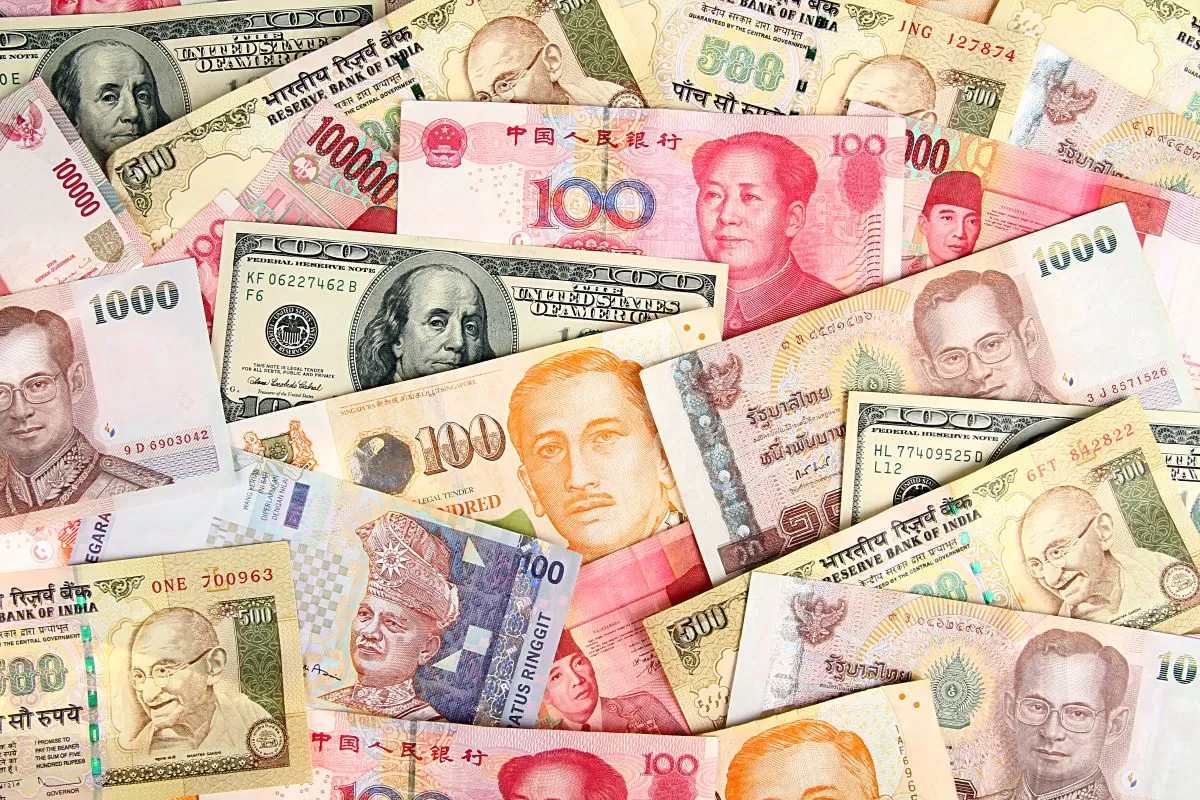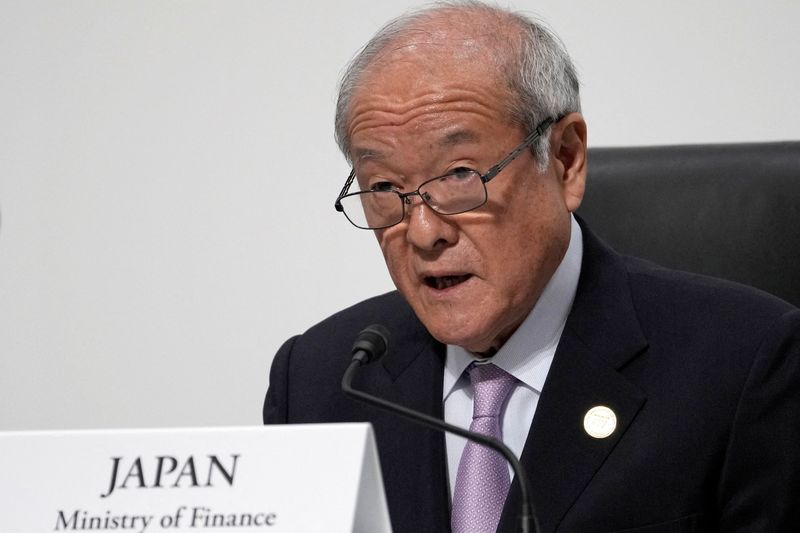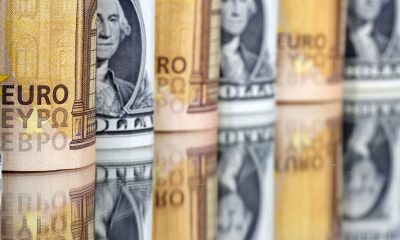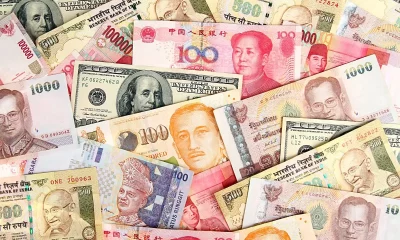Forex
Asia FX rises as markets reassess Fed outlook ahead of payrolls

Most Asian currencies rose slightly on Friday, recouping some of the week’s losses as markets grew uncertain over the path of U.S. monetary policy ahead of key nonfarm payrolls data due later in the day.
Regional units saw some support after the dollar tumbled on Thursday, as disappointing manufacturing data and mixed labor market readings from the U.S. saw traders question just how much economic headroom the Federal Reserve has to keep raising rates.
The Chinese yuan rose 0.1%, moving further away from six-month lows hit earlier this week. The currency was aided by a stronger daily midpoint fix from the People’s Bank of China.
A private survey released on Thursday also showed some resilience in China’s manufacturing sector, brewing some optimism over an eventual economic rebound this year, although the near-term outlook remains dour.
Optimism over China also spilled over into the Australian dollar, which rose 0.4% tracking gains in commodity prices.
The Japanese yen was flat on Friday as Bank of Japan Governor Kazuo Ueda said that the bank did not have a set time frame for when inflation will reach its 2% annual target, while reiterating that the BOJ will maintain its ultra-dovish policy for the time being.
Still, the yen was sitting on strong overnight gains, as it recovered from a six-month low hit earlier this week.
The South Korean won rose 0.2%, as data showed the country’s economy grew slightly more than expected in the first quarter. Inflation also remained steady in May from the prior month.
Broader Asian currencies advanced, while the dollar steadied in Asian trade after steep overnight losses.
The dollar index and dollar index futures moved less than 0.1% in either direction, after tumbling nearly 0.7% each on Thursday.
Data showed that U.S. manufacturing activity shrank for a seventh straight month in May, while data on the labor market showed that wages were stagnating, even as hiring continued to expand this year.
The readings pushed up bets on a Fed pause in June, with Fed Funds futures prices indicating a nearly 74% chance for a pause. But Friday’s nonfarm payrolls reading is likely to provide a clearer view on how the Fed may move.
While the reading is expected to have eased in May from the prior month, payrolls have also beat expectations for 12 of the last 13 months. A strong labor market gives the Fed more impetus and space to maintain higher rates – a scenario that bodes poorly for Asian currencies.
Forex
Asia FX weak ahead of US inflation; yen dips as BOJ gives little support

Investing.com– Most Asian currencies weakened on Friday, while the dollar steadied in anticipation of key inflation data that is expected to factor into the Federal Reserve’s stance on interest rate cuts.
While an overnight drop in the dollar- following weaker-than-expected U.S. gross domestic product data- offered some relief to Asian units, this was largely offset by persistent bets on higher-for-longer U.S. interest rates. The dollar also trimmed some of its losses in Asian trade.
Japanese yen weakens, USDJPY crosses 156 after BOJ
The Japanese yen was an underperformer, with the pair rising past 156 to new 34-year highs after comments from the Bank of Japan sparked doubts over just how much capacity the central bank had to raise interest rates further.
The BOJ after a historic hike in March. The central bank also forecast higher inflation in the coming years.
But the BOJ also , raising doubts over just how much capacity it would have to keep raising interest rates. This presented a largely dovish outlook for the yen.
Softer-than-expected – released earlier on Friday- further sparked doubts over a hawkish BOJ.
Still, losses in the yen were limited by continued fears of government intervention in currency markets. An upcoming press conference with BOJ Governor , at 02:30 ET (06:30 GMT) also presented the possibility of more hawkish signals.
Broader Asian currencies also weakened on Friday, amid persistent fears of higher-for-longer U.S. interest rates. The Chinese yuan’s pair rose slightly and remained close to recent five-month highs.
remove ads
.
South Korea’s pair rose 0.4%, while the Singapore dollar’s pair added 0.1%.
The Australian dollar’s pair was supported by strong inflation data, which, coupled with higher earlier this week, sparked bets on higher-for-longer rates in the country.
The Indian rupee’s pair moved little, with traders growing wary of more volatility in Indian markets as the 2024 general elections began.
Dollar steadies with PCE inflation on tap
The and rose marginally in Asian trade, recovering some overnight losses.
showed growth in the U.S. economy cooled more than expected in the first quarter, amid sticky inflation and high rates.
But inflation remained uncomfortably high, with the growing more than expected.
This put upcoming data squarely in focus. The reading is the Federal Reserve’s preferred inflation gauge.
Despite Thursday’s weak GDP reading, traders were seen steadily pricing out expectations for any near-term rate cuts by the Fed. The now shows traders pricing in rate cuts only by September, or the fourth quarter.
Forex
Explainer-What would Japanese intervention to boost a weak yen look like?

By Leika Kihara
TOKYO (Reuters) -Japanese authorities are facing renewed pressure to combat a sustained depreciation in the yen, as traders drive down the currency on expectations that any further interest rate hikes by the central bank will be slow in forthcoming.
Below are details on how yen-buying intervention works:
LAST CONFIRMED YEN-BUYING INTERVENTION?
Japan bought yen in September 2022, its first foray in the market to boost its currency since 1998, after a Bank of Japan (BOJ) decision to maintain its ultra-loose monetary policy drove the yen as low as 145 per dollar. It intervened again in October after the yen plunged to a 32-year low of 151.94.
WHY STEP IN?
Yen-buying intervention is rare. Far more often the Ministry of Finance has sold yen to prevent its rise from hurting the export-reliant economy by making Japanese goods less competitive overseas.
But yen weakness is now seen as problematic, with Japanese firms having shifted production overseas and the economy heavily reliant on imports for goods ranging from fuel and raw materials to machinery parts.
WHAT HAPPENS FIRST?
When Japanese authorities escalate their verbal warnings to say they “stand ready to act decisively” against speculative moves, that is a sign intervention may be imminent.
Rate checking by the BOJ – when central bank officials call dealers and ask for buying or selling rates for the yen – is seen by traders as a possible precursor to intervention.
WHAT HAPPENED SO FAR?
Finance Minister Shunichi Suzuki told reporters on March 27 that authorities could take “decisive steps” against yen weakness – language he hasn’t used since the 2022 intervention.
remove ads
.
Hours later, Japanese authorities held an emergency meeting to discuss the weak yen. The meeting is usually held as a symbolic gesture to markets that authorities are concerned about rapid currency moves.
After the warnings failed to arrest the yen’s fall, South Korea and Japan won acknowledgement from the United States over their “serious concerns” about their currencies’ declines in a trilateral meeting held in Washington last week.
The market impact of the agreement did not last long. The dollar continued its ascent and notched a 34-year high of 155.74 yen on Thursday, driving past the 155 level seen as authorities’ line in the sand for intervention.
NEXT LINE IN THE SAND?
Authorities say they look at the speed of yen falls, rather than levels, and whether the moves are driven by speculators, to determine whether to step into the currency market.
While the dollar has moved above the psychologically important 155 level, the recent rise has been gradual and driven mostly by U.S.-Japanese interest rate differentials. That may make it hard for Japan to argue that recent yen falls are out of line with fundamentals and warrant intervention.
Some market players bet Japanese authorities’ next line in the sand could be 160. Ruling party executive Takao Ochi told Reuters the yen’s slide towards 160 or 170 to the dollar could prod policymakers to act.
WHAT’S THE TRIGGER?
The decision is highly political. When public anger over the weak yen and a subsequent rise in the cost of living is high, that puts pressure on the administration to respond. This was the case when Tokyo intervened in 2022.
remove ads
.
Prime Minister Fumio Kishida may feel the need to prevent further yen falls from pushing up the cost of living with his approval ratings faltering ahead of a ruling party leadership race in September.
But the decision would not be easy. Intervention is costly and could easily fail, given that even a large burst of yen buying would pale next to the $7.5 trillion that change hands daily in the foreign exchange market.
HOW WOULD IT WORK?
When Japan intervenes to stem yen rises, the Ministry of Finance issues short-term bills, raising yen it then sells to weaken the Japanese currency.
To support the yen, however, the authorities must tap Japan’s foreign reserves for dollars to sell for yen.
In either case, the finance minister issues the order to intervene and the BOJ executes the order as the ministry’s agent.
CHALLENGES?
Japanese authorities consider it important to seek the support of Group of Seven partners, notably the United States if the intervention involves the dollar.
Washington gave tacit approval when Japan intervened in 2022, reflecting recent close bilateral relations.
Finance Minister Suzuki said last week’s meeting with his U.S. and South Korean counterparts laid the groundwork to act against excessive yen moves, a sign Tokyo saw the meeting as informal consent by Washington to intervene as needed.
U.S. Treasury Secretary Janet Yellen said currency interventions should occur only in “very rare and exceptional circumstances,” when markets are disorderly with excessive volatility. She declined to comment on the yen’s value.
A looming U.S. presidential election may complicate Japan’s decision on whether and when to intervene.
remove ads
.
In a social media post on Tuesday, Republican presidential candidate Donald Trump decried the yen’s historic slide against the dollar, calling it a “total disaster” for the United States.
There is no guarantee intervention will effectively shift the weak-yen tide, which is driven largely by expectations of prolonged low interest rates in Japan. BOJ Governor Kazuo Ueda has dropped hints of another rate hike but stressed that the bank will tread cautiously given Japan’s fragile economy.
Forex
Japan frets over relentless yen slide as BOJ keeps ultra-low rates

By Satoshi Sugiyama and Makiko Yamazaki
TOKYO (Reuters) -Japan is concerned about negative effects of the weak yen, finance minister Shunichi Suzuki said on Friday, in a fresh warning to speculators as the currency fell further after the central bank’s widely expected decision to hold rates steady.
The Bank of Japan kept policy settings unchanged earlier in the session following a two-day meeting, triggering a bout of volatility in the yen as it slid to below 156 levels on the dollar, its weakest since 1990.
The latest wobbles in the currency came as Suzuki, who spoke hours ahead of the BOJ decision, repeated his recent warnings against speculative moves in the yen, keeping traders on edge as to when Tokyo may intervene in the markets.
“The weak yen has both positive and negative impacts (on the economy),” Suzuki told a press conference, adding that he is “more concerned about the negative effects right now.”
Suzuki said he could not comment on specific policy measures on foreign exchange, but that authorities were closely watching currency moves and stood ready to take action.
While a weak yen boosts exports, it has become a headache for Japanese policymakers as it inflates the cost of living for households by pushing up import prices. The finance minister said that measures to combat surging prices are key policy priorities for the government.
The yen’s slide to 34-year lows against a broadly firmer dollar has been driven by wide U.S.-Japan interest rate differentials. The yield-induced downturn in the yen has gained renewed momentum on signs the Bank of Japan will go slow on raising its near-zero rates and expectations the U.S. Federal Reserve will likely delay the start of its rate-cutting cycle.
remove ads
.
INTERVENTION IS ‘FUTILE’
At a post-policy press conference, BOJ Governor Kazuo Ueda gave little away on when the next rate hike would come.
Ueda said while the impact of yen moves was usually temporary, its effects on underlying inflation could not be dismissed.
The yen briefly jumped against the dollar after Ueda’s briefing ended, but it was not immediately clear whether authorities actually stepped in. The Japanese currency was last down around 0.7% at 156.69, after temporarily spiking to 154.97, having minutes earlier slumping to fresh 34-year lows of 156.82.
“The currency takeaway is certainly disappointment from the lack of guidance from the bank,” said Rodrigo Catril, senior Sydney-based forex strategist at National Australia Bank (OTC:).
“To me, the currency market is telling us it believes that the BOJ policy is too loose and hence why the currency is so weak.”
The yen’s continued weakness has taken it firmly past 152 and 155 levels to the dollar, which traders had previously seen as a line in the sand that would prompt Tokyo to intervene in the markets. It is down around 10% on the dollar this year and has lost more than 34% of its value in three years.
Suzuki declined to comment on remarks made by U.S. Treasury Secretary Janet Yellen that the U.S. dollar has been strong and interventions by other governments in currency markets is acceptable only in rare and extraordinary circumstances.
At the parliament later in the day, Suzuki said while foreign exchange levels reflect various factors including economic indicators and price trends, interest rate differentials remain the crucial determinant.
remove ads
.
Japan last intervened in the currency market in 2022, spending roughly $60 billion to defend the yen.
Traders figure there is not much Tokyo can do to reverse the currency’s slide while interest rates and momentum are heavily skewed against it.
“(Currency) intervention in a scenario where we’re seeing upward pressure on U.S. Treasury yields is going to be a futile exercise,” NAB’s Catril said.

 Forex2 years ago
Forex2 years agoForex Today: the dollar is gaining strength amid gloomy sentiment at the start of the Fed’s week

 Forex2 years ago
Forex2 years agoHow is the Australian dollar doing today?

 Forex1 year ago
Forex1 year agoUnbiased review of Pocket Option broker

 Forex2 years ago
Forex2 years agoDollar to pound sterling exchange rate today: Pound plummeted to its lowest since 1985

 Cryptocurrency2 years ago
Cryptocurrency2 years agoWhat happened in the crypto market – current events today

 World2 years ago
World2 years agoWhy are modern video games an art form?

 Stock Markets2 years ago
Stock Markets2 years agoMorgan Stanley: bear market rally to continue

 Economy2 years ago
Economy2 years agoCrude oil tankers double in price due to EU anti-Russian sanctions

























